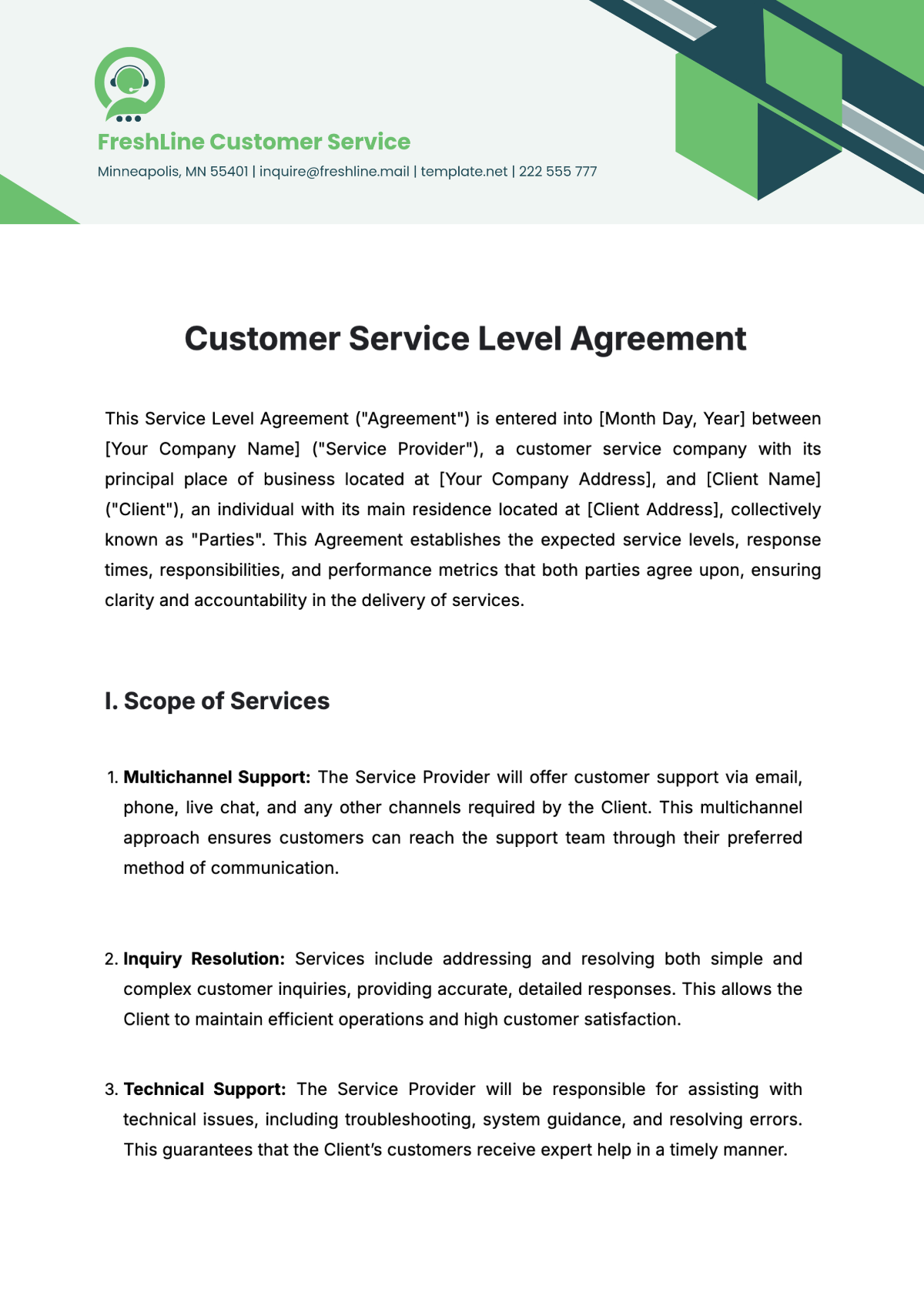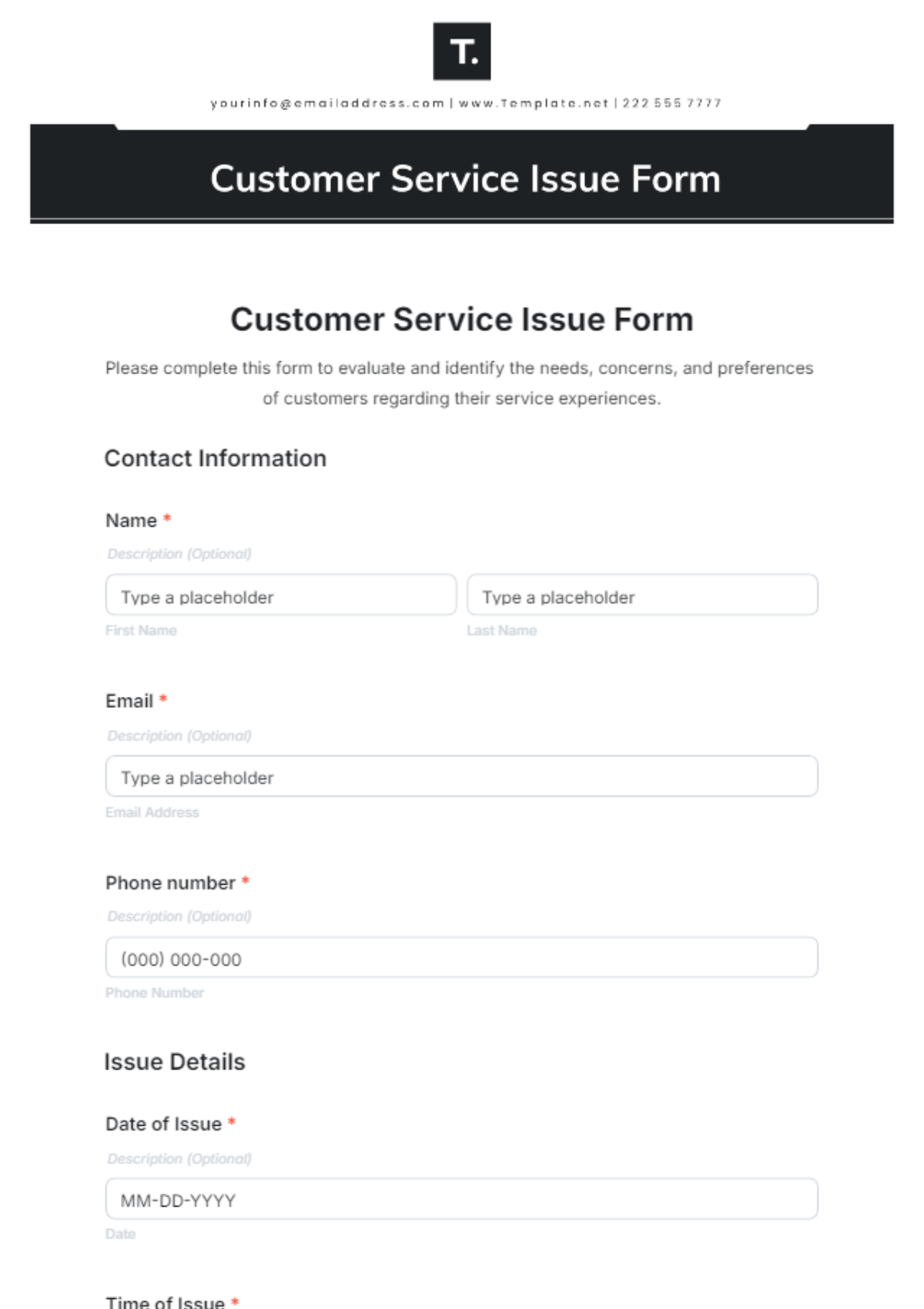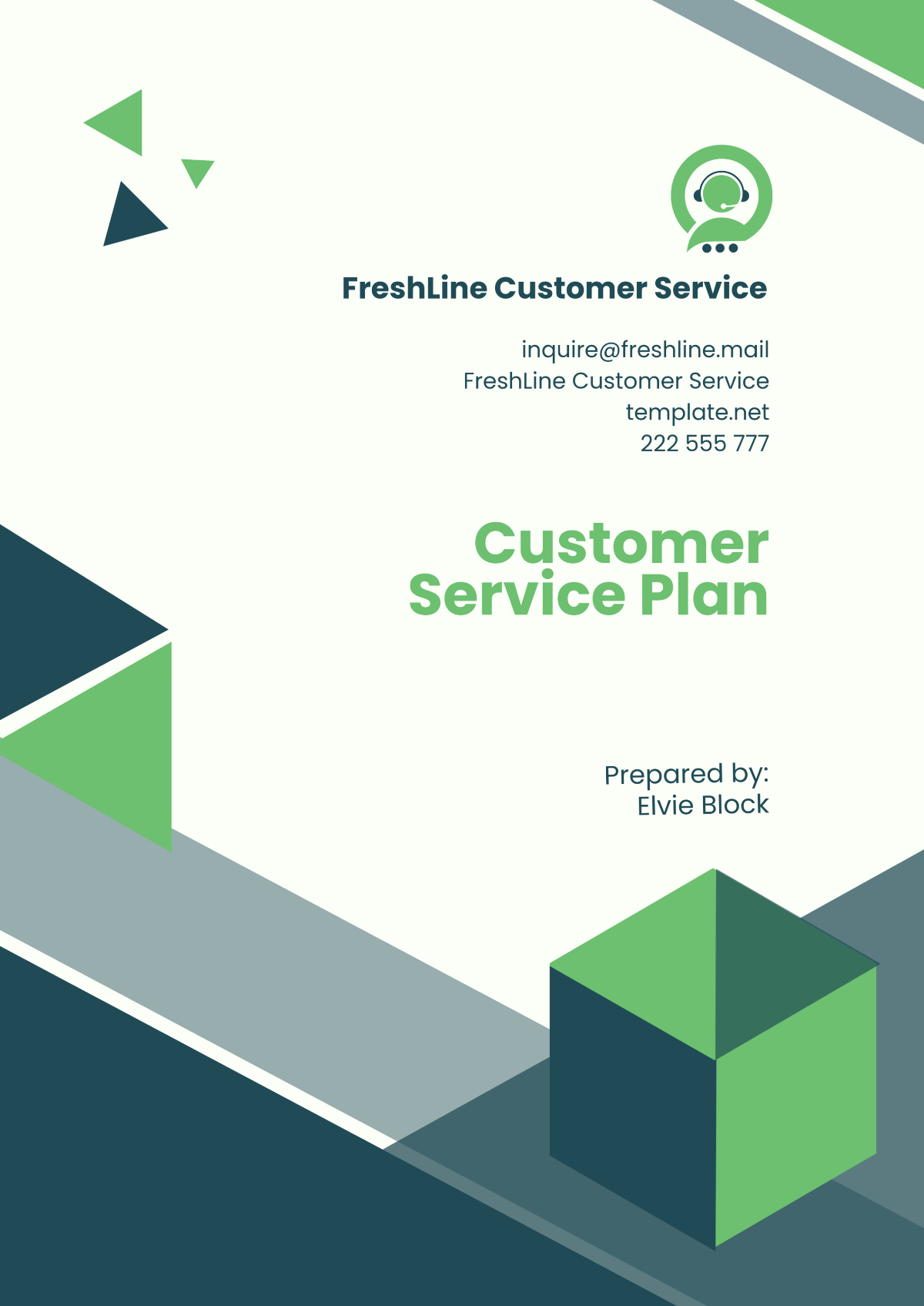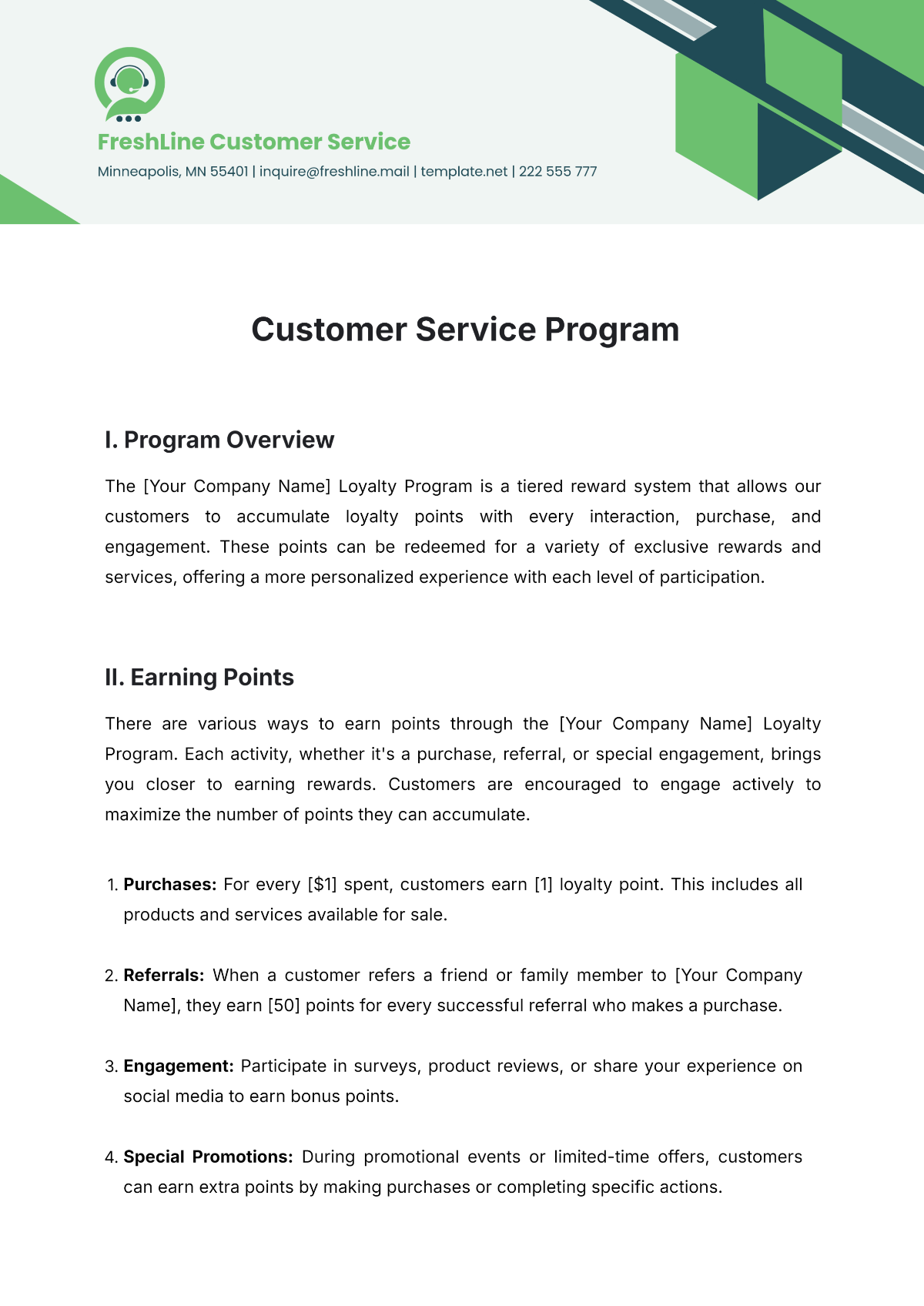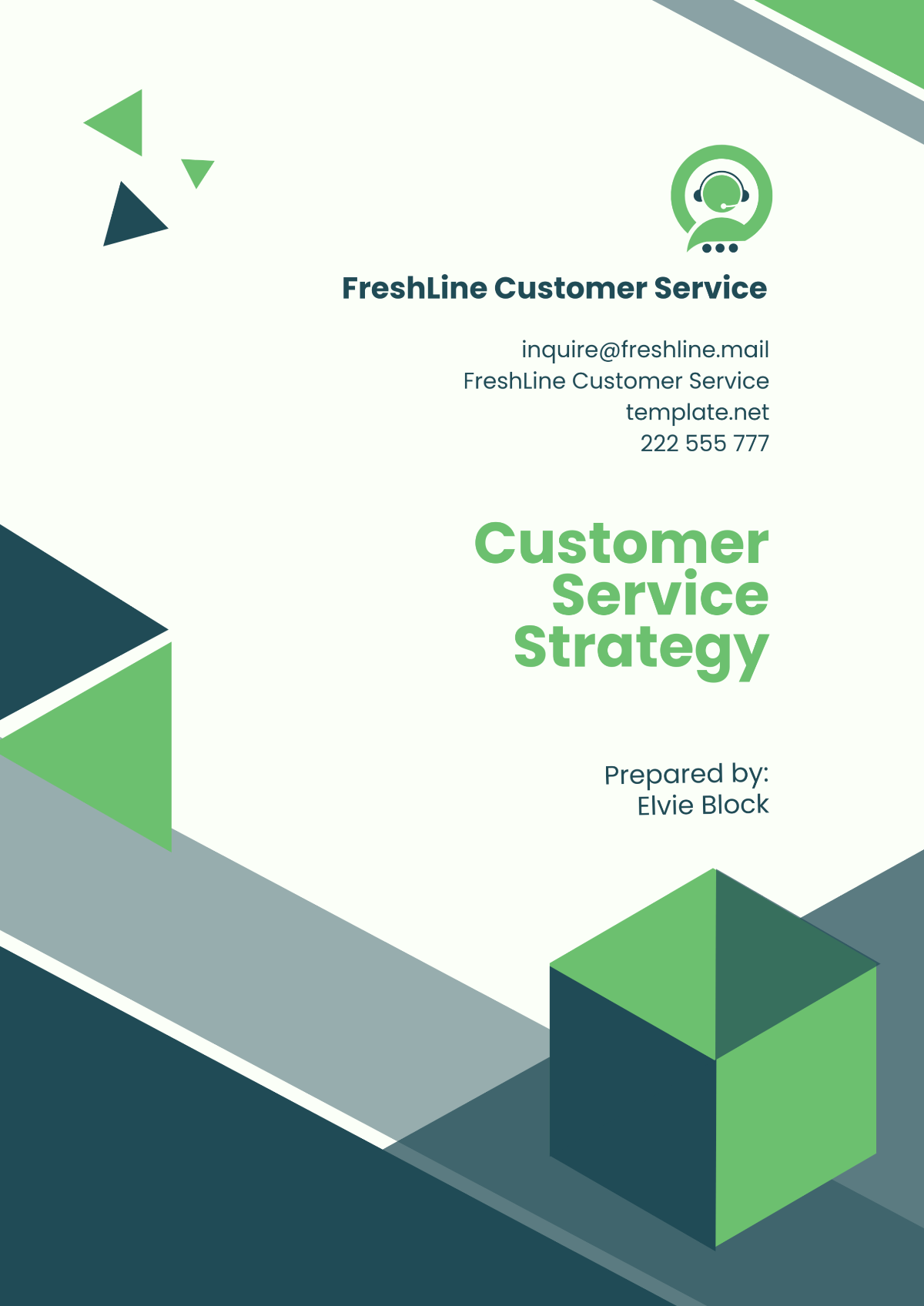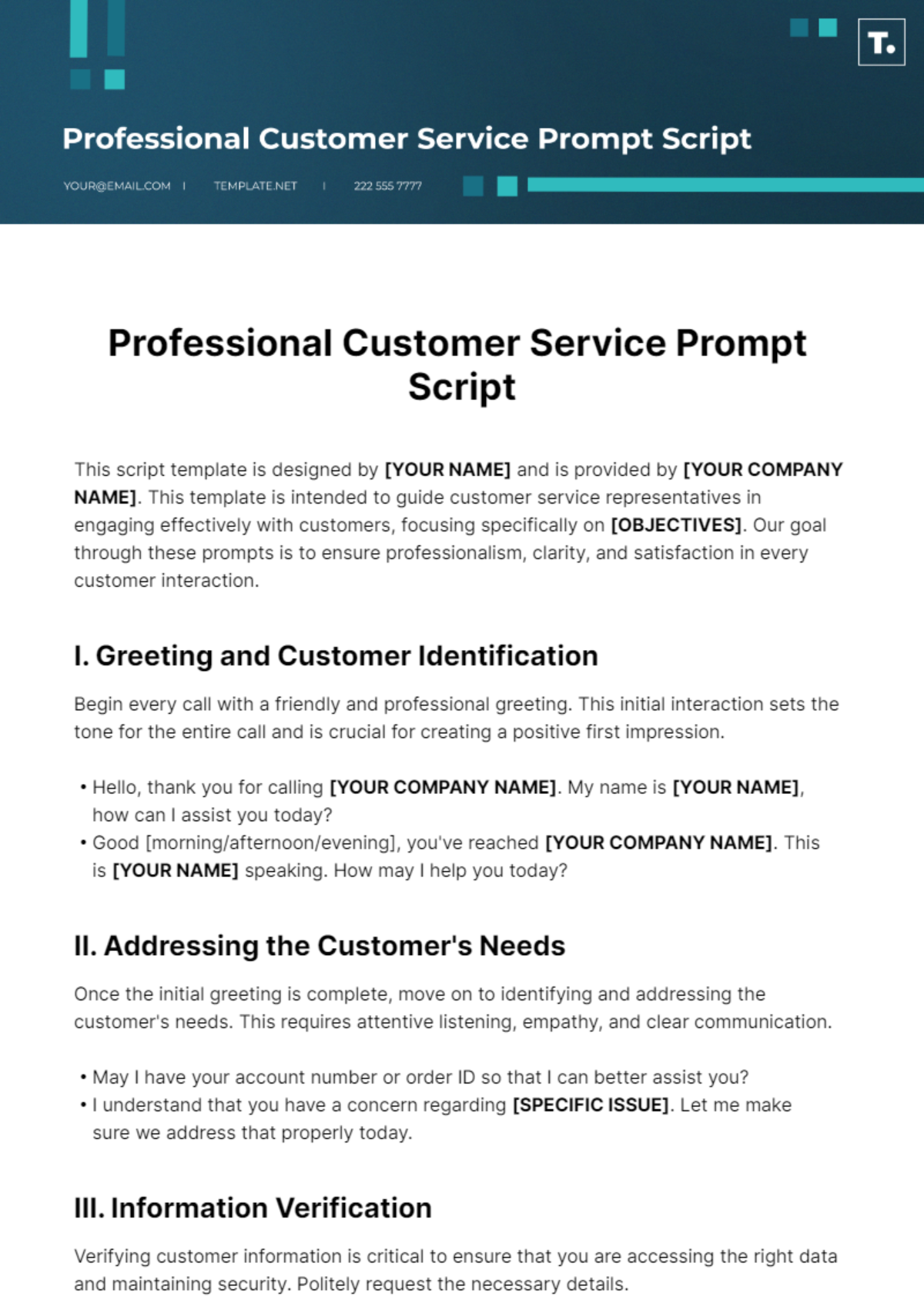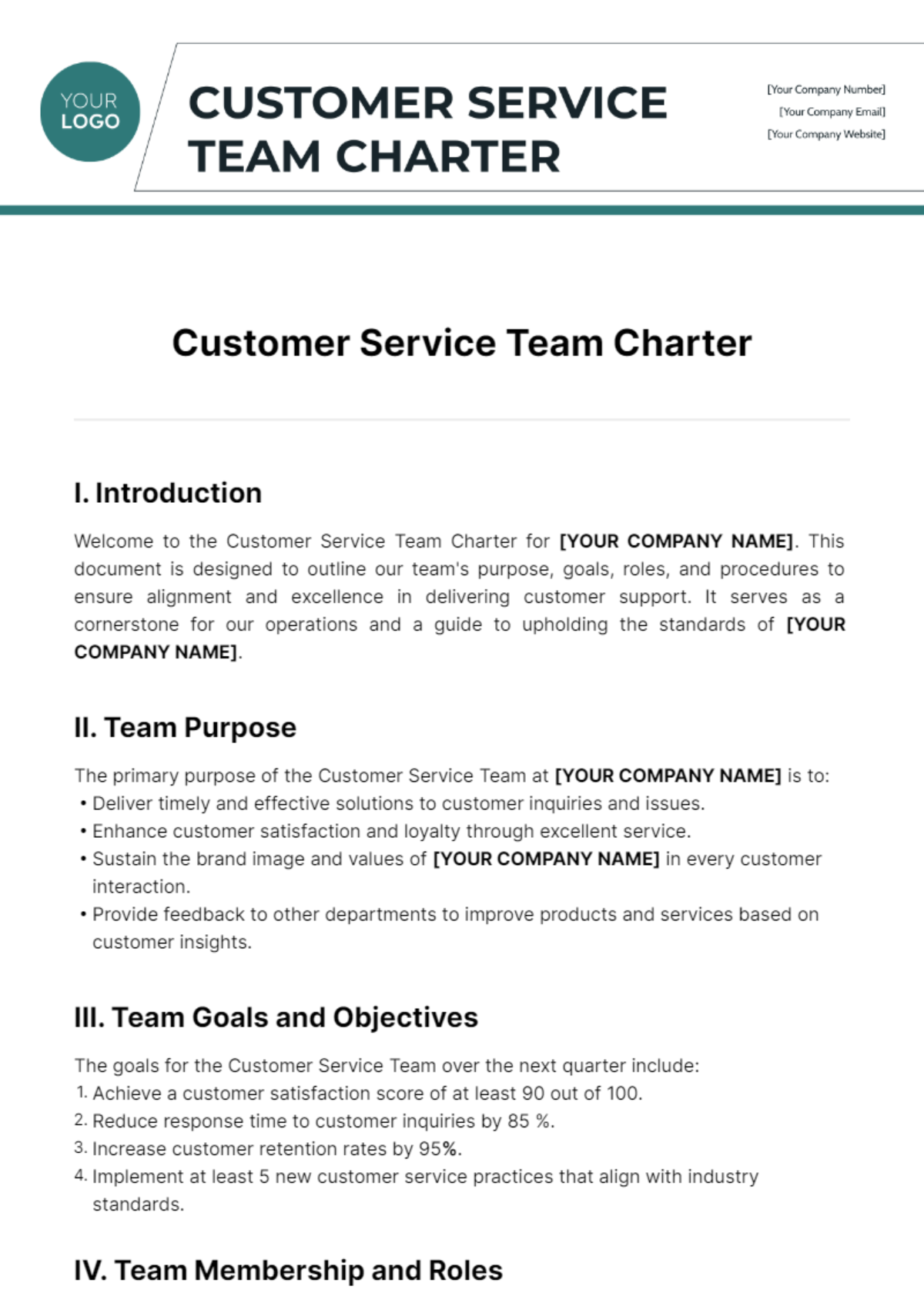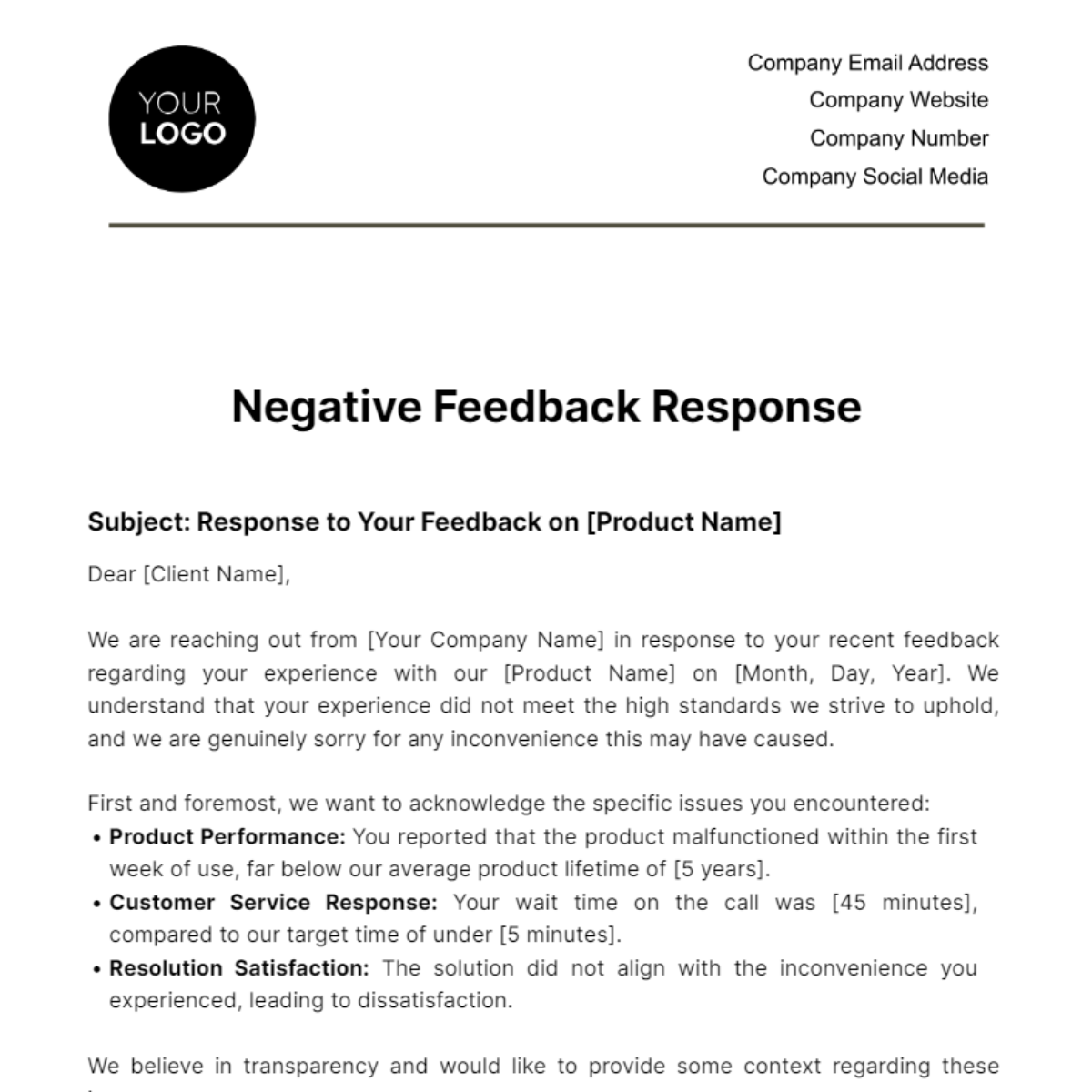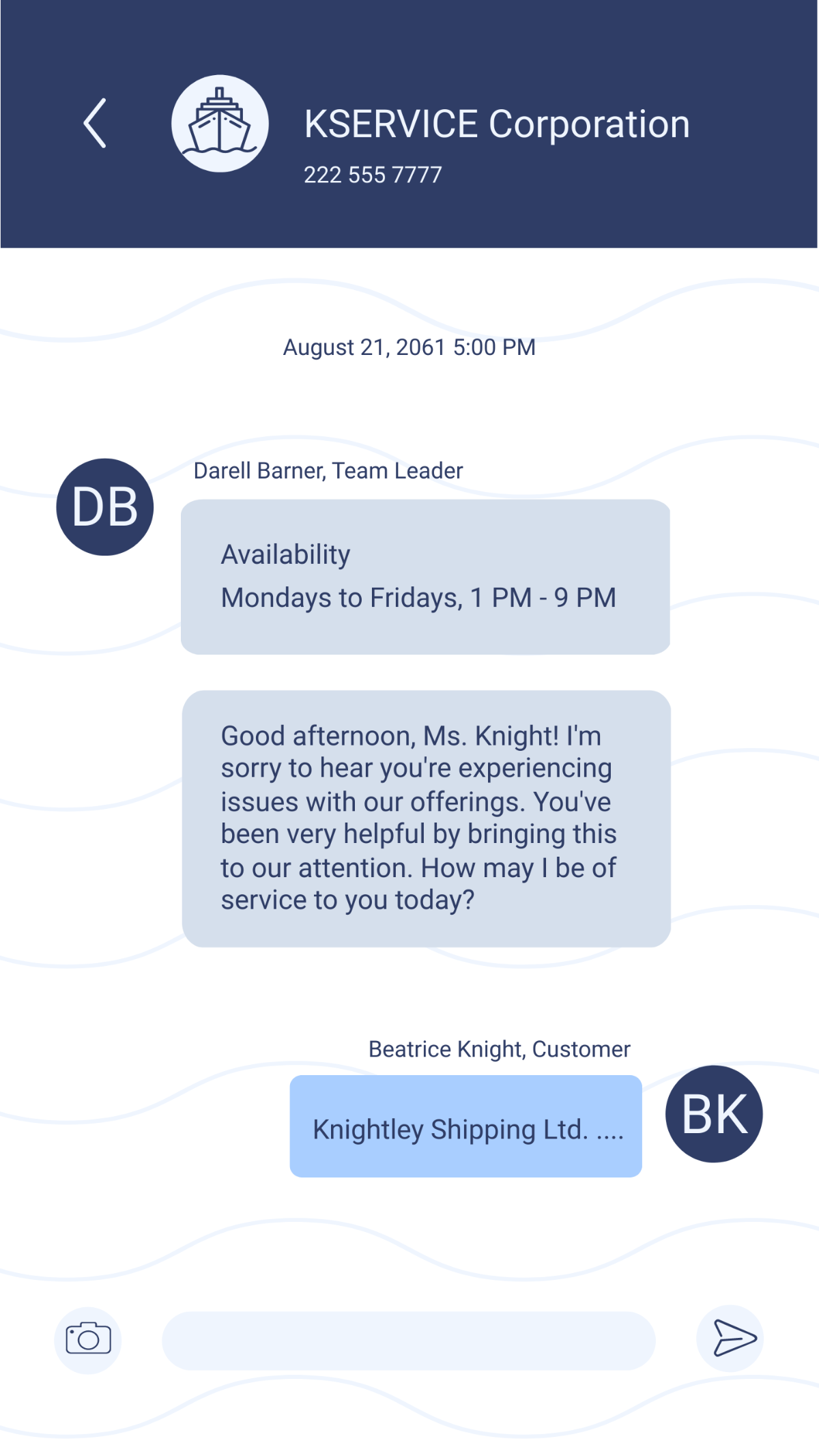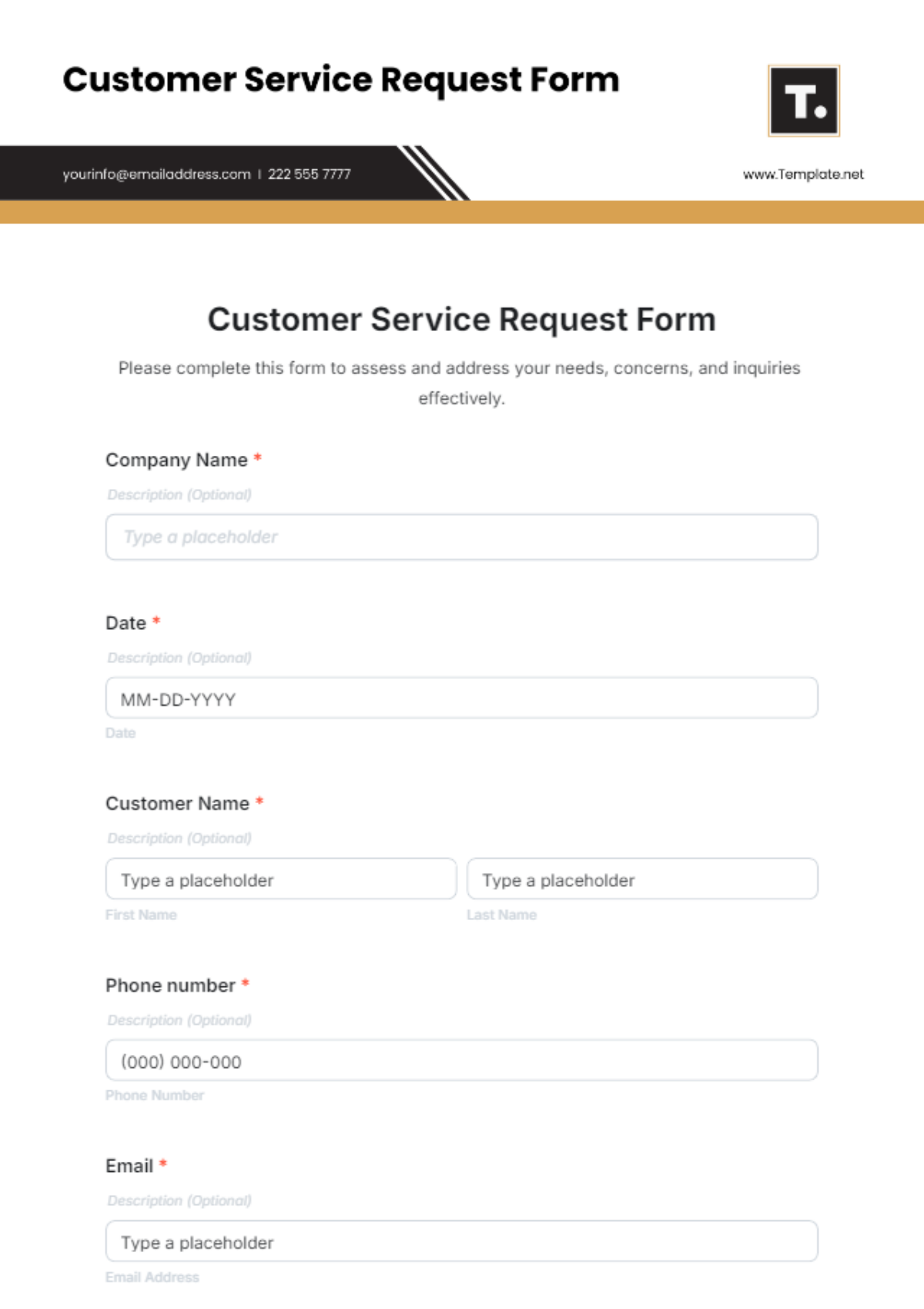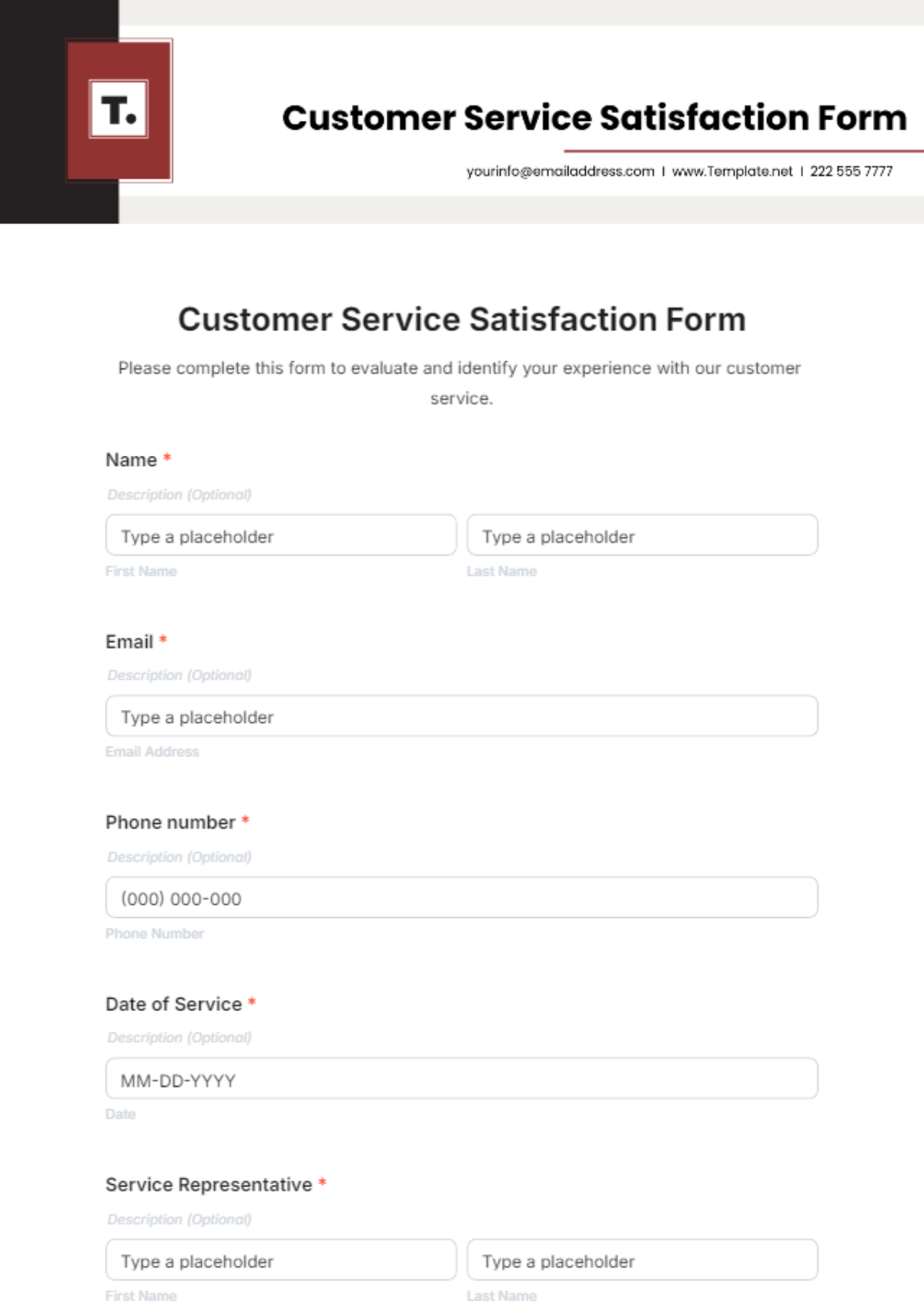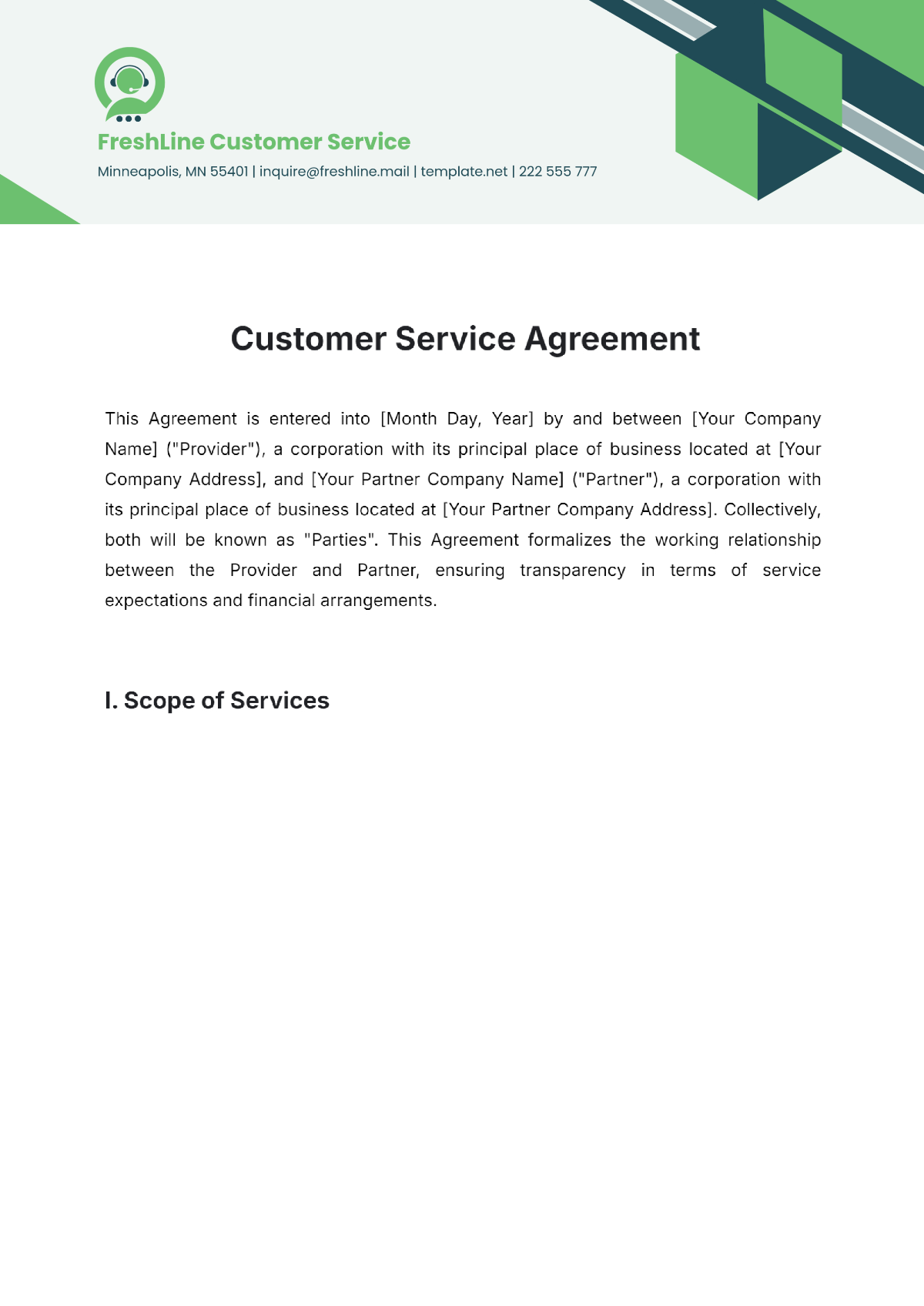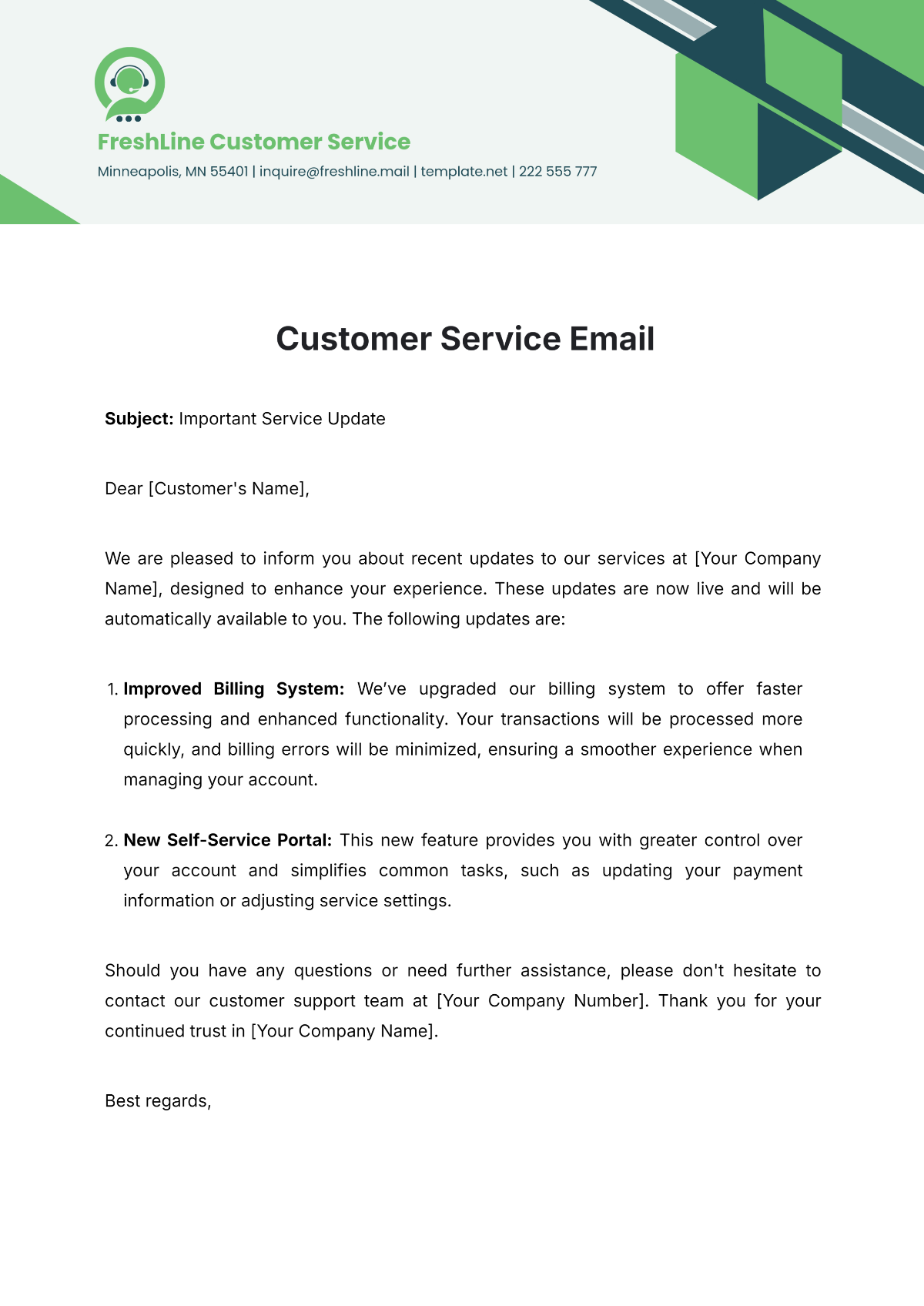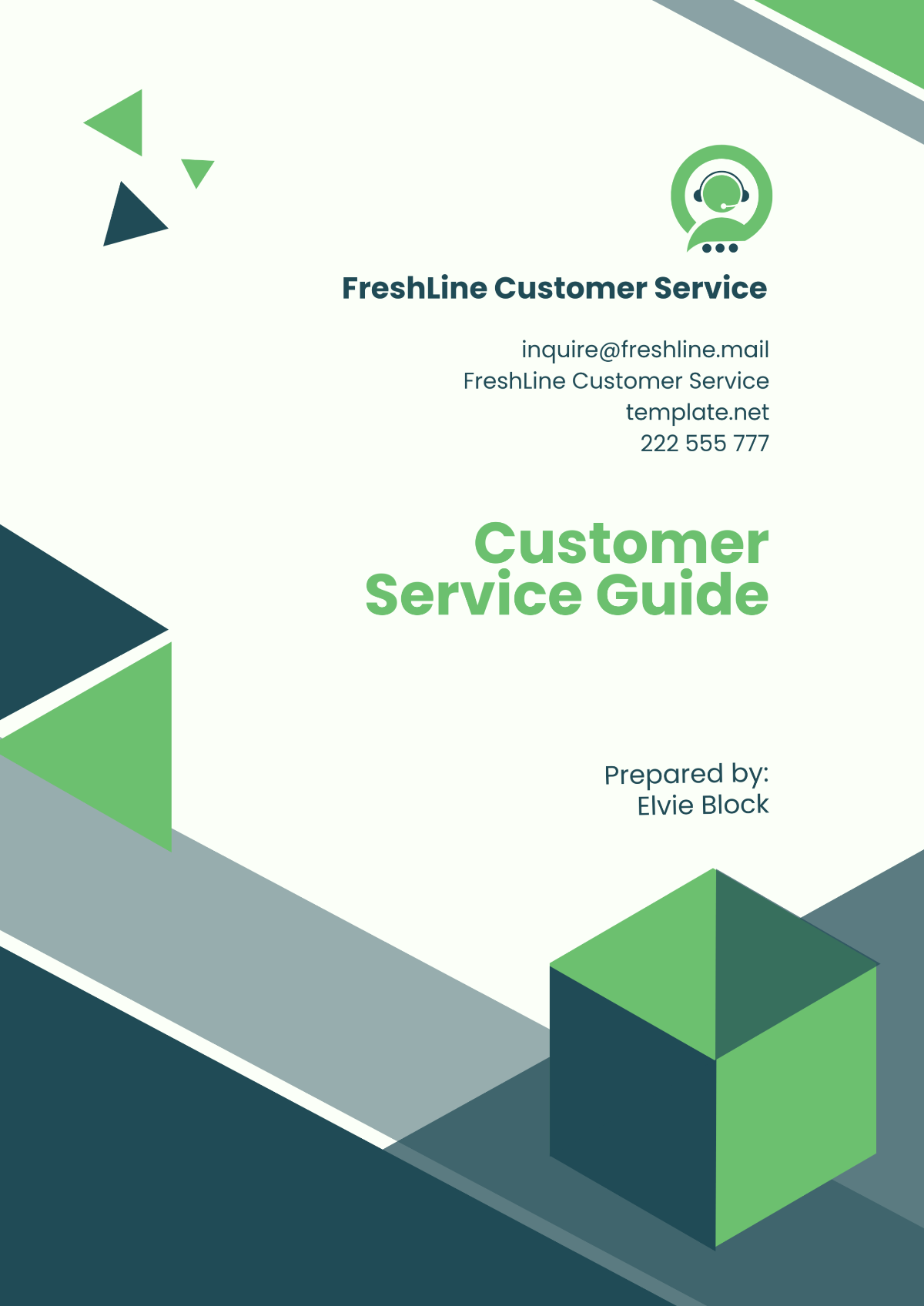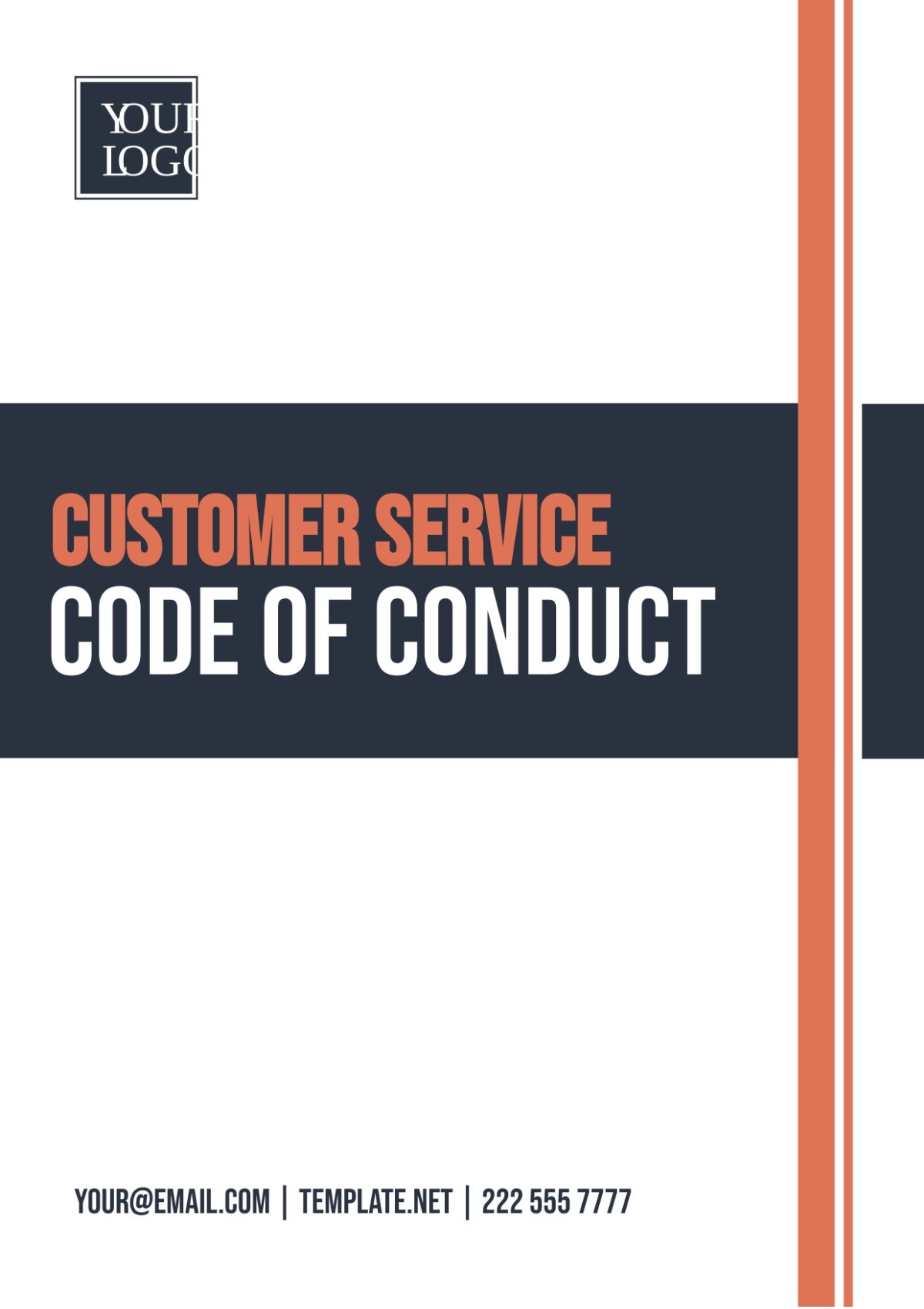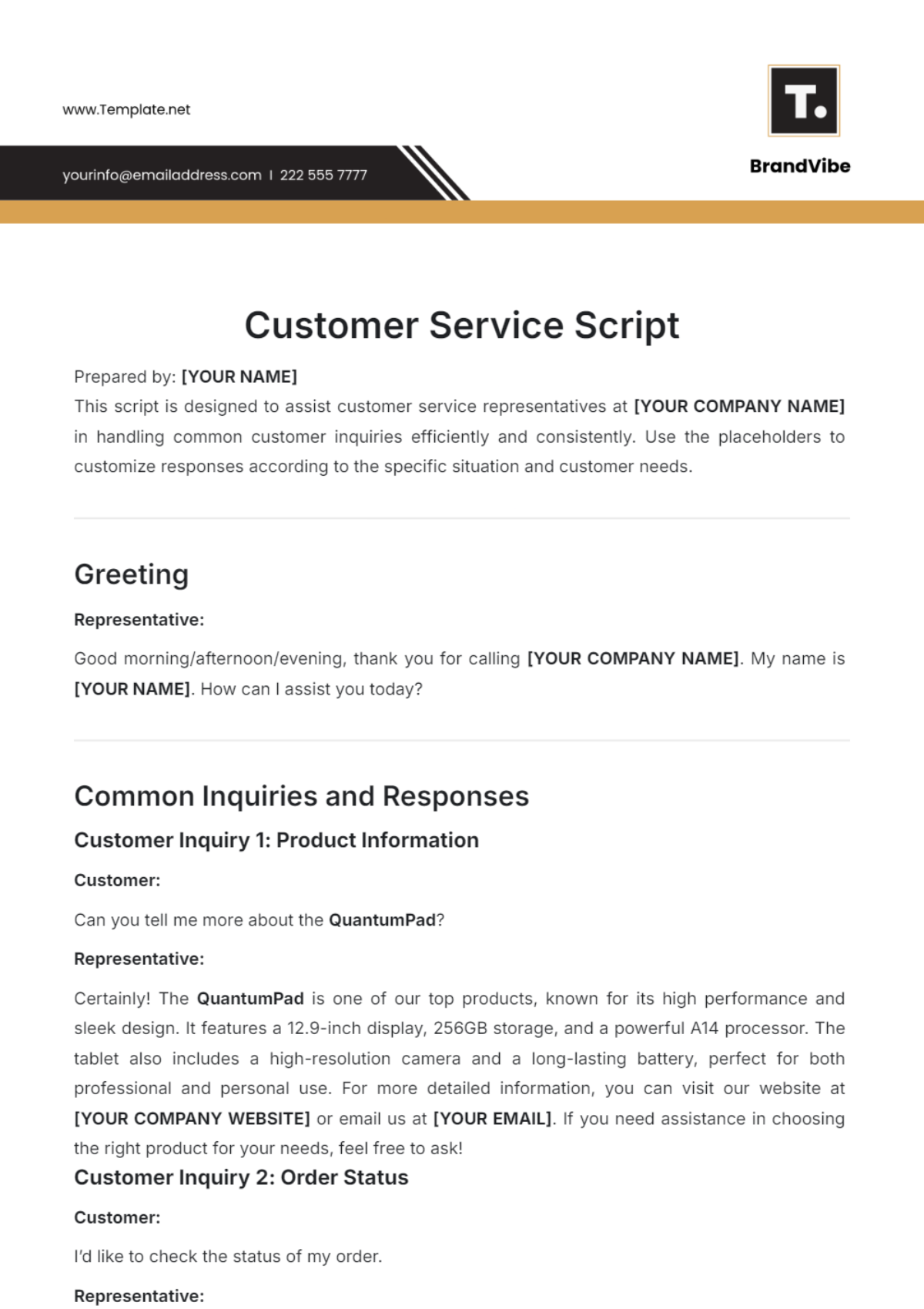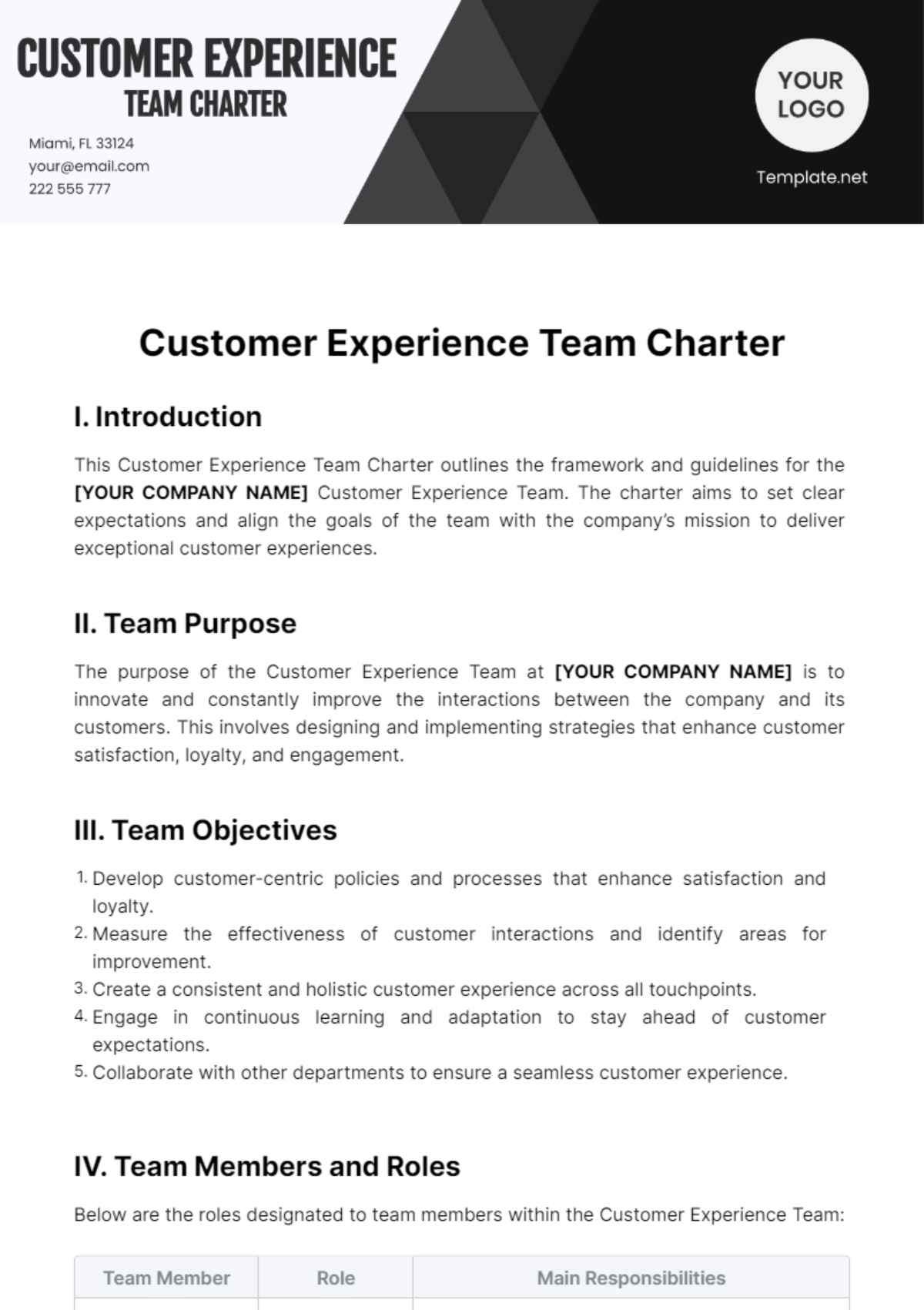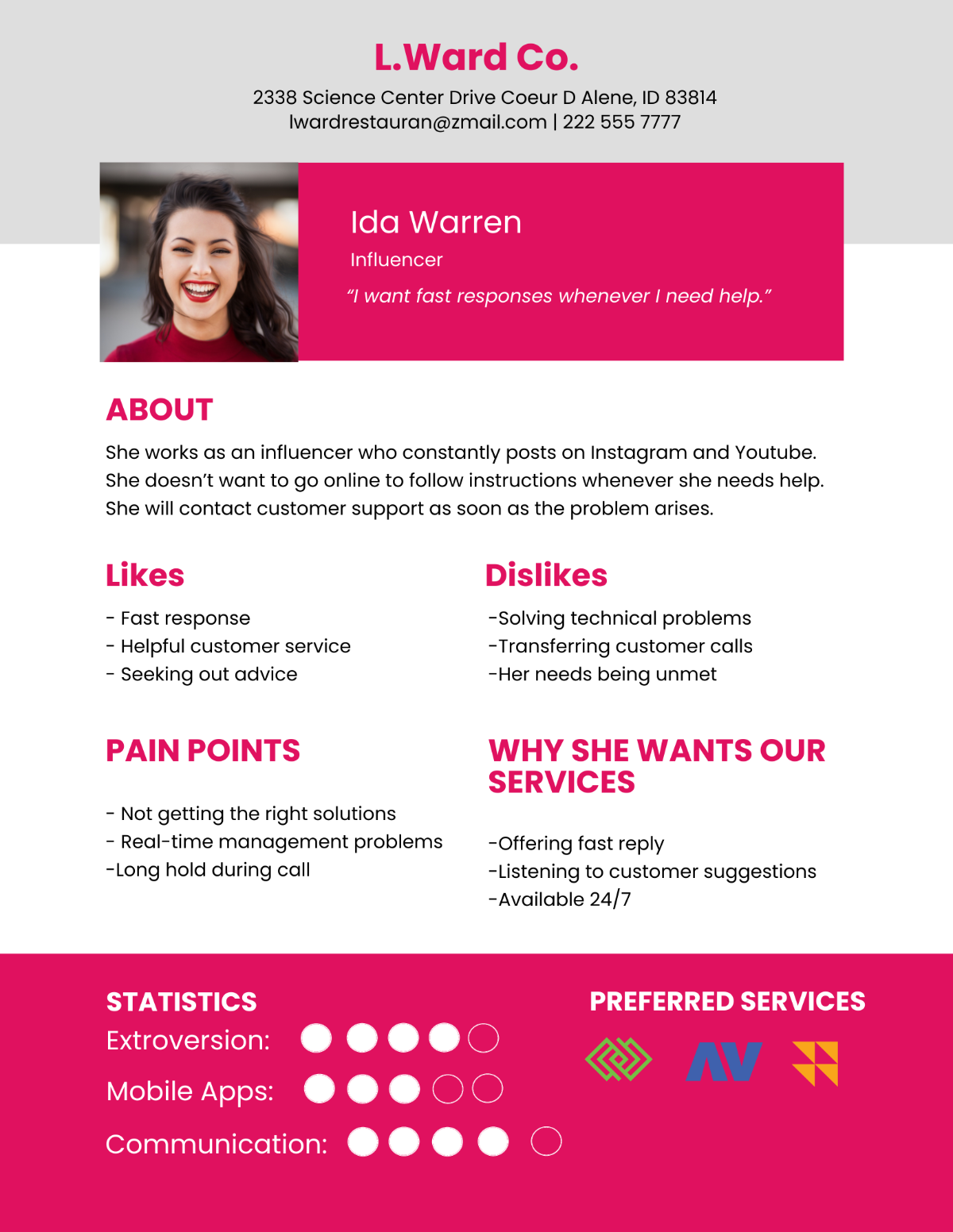Guide on Handling Post-Sale Customer Issues
I. Objective Setting and Overview
Customer satisfaction and loyalty are paramount, thus, post-sale customer service plays a pivotal role in ensuring [Your Company Name]’s long-term success. It goes beyond the initial transaction and dives into the realm of customer support, addressing concerns, and providing assistance after a purchase has been made. In this document, we will examine and review all facets of post-sale customer service, supported by statistical data, case studies, research findings, and facts, to better emphasize its significance.
A. Definition and Importance
a. Understanding Post-Sale Service
Post-sale service is the ongoing support and assistance provided to customers after they have completed a purchase. It covers a wide range of activities, from resolving product issues to answering queries and ensuring customer satisfaction. As businesses increasingly focus on creating exceptional customer experiences, post-sale service has emerged as a critical component of the customer journey.
Our company’s teams of researchers have indicated that [68%] of customers believe a company's reputation for customer service is a crucial factor in their buying decisions. This emphasizes the vital role post-sale service plays in shaping customer perceptions and influencing their future interactions with a brand.
b. Impact on Customer Retention and Brand Loyalty
The impact of effective post-sale service extends far beyond resolving individual customer issues. It has a profound influence on customer retention and brand loyalty. According to a study done by our research teams, increasing customer retention rates by just [5%] can increase profits by [25% to 95%]. When customers receive timely, helpful, and empathetic post-sale support, they are more likely to become repeat buyers and enthusiastic brand advocates.
Satisfied customers are likely to share their positive experiences with friends and on social media, contributing to free word-of-mouth marketing and expanding a brand's reach. Therefore, post-sale service is not only about solving problems but also about cultivating brand loyalty and driving future sales.
B. Setting Customer Expectations
a. Transparent Communication of Service Policies
One of the fundamental principles of post-sale service is transparent communication. Customers should be well-informed about a company's service policies, including warranty details, return processes, and support availability. Transparent communication builds trust and reduces the potential for misunderstandings, leading to smoother interactions.
According to our researchers, via a city-wide survey, [90%] of customers claim that they prefer brands that offer transparency about their products and services. Therefore, being upfront about what customers can expect regarding post-sale service is not just good practice; it's a strategic imperative in fostering trust and loyalty.
b. Realistic Timeframes for Issue Resolution
Another critical aspect of setting customer expectations in post-sale service is establishing realistic timeframes for issue resolution. Promising quick fixes and then failing to deliver can lead to customer frustration and dissatisfaction. On the other hand, providing clear and achievable timelines for problem resolution improves customer satisfaction and reinforces their trust in your brand.
Customers who received accurate time estimates for issue resolution are more satisfied with their service experience. They are also more likely to remain loyal to the brand, highlighting the importance of setting and meeting realistic time frames in post-sale service.
C. Aligning Post-Sale Service with Company Values
a. Reflecting the Brand’s Commitment to Quality
Every interaction in the post-sale phase should reflect the brand's commitment to quality. Whether it's the tone of communication or the resolution offered, it should reinforce the brand's image and core values. Customers often associate the quality of post-sale service with the overall quality of a company's products or services. Therefore, aligning post-sale service with a commitment to excellence is of great importance.
b. Ensuring Consistency in Customer Experience
Consistency is vital for a successful post-sale service. Customers should receive the same level of service across all touchpoints and interactions, aligning with the company's values and service standards. Inconsistencies can lead to confusion and frustration, ultimately eroding trust and loyalty.
Post-sale customer service is not merely a support function but a strategic asset that can significantly impact customer retention, brand loyalty, and overall business success. By understanding its importance, setting clear customer expectations, and aligning it with company values, businesses can harness the full potential of post-sale service to create lasting relationships with their customers and thrive in today's competitive market.
II. Customer Analysis and Segmentation
When enhancing post-sale customer service, it is crucial to start by identifying the common issues that customers often encounter after making a purchase. This section will examine the systematic cataloging of typical customer complaints and the development of a structured triage system to effectively address these issues. By doing so, we aim to streamline our post-sale service operations and ensure that we respond to customer concerns promptly and efficiently.
A. Cataloging Typical Customer Complaints
a. Product Defects or Failures
One of the primary areas of concern for customers post-sale is encountering product defects or failures. These issues can range from minor inconveniences to critical malfunctions that render the product unusable. To address this, it is crucial to keep a meticulous record of product defects or failures reported by customers.
By documenting these complaints and analyzing patterns, we can identify whether there is a recurring manufacturing issue that needs to be addressed. This data-driven approach allows us to take proactive measures, such as refining our production processes or conducting more stringent quality assurance checks.
b. Warranty Claims and Coverage Clarifications
Another common source of customer frustration post-sale is related to warranty claims and coverage. Customers often have questions about what is covered under the warranty, how to initiate a claim, and what to expect during the process. To alleviate these concerns and improve the overall customer experience, it is essential to provide clarity and guidance.
By clearly outlining the procedure for warranty claims and ensuring that our customer service staff are well-trained to explain coverage details, we can minimize confusion and accelerate the resolution process. This not only enhances customer satisfaction, but also strengthens our reputation for transparent and reliable post-sale service.
B. Developing a Triage System
a. Prioritizing Issues by Urgency and Severity
Not all customer issues are created equal. Some require immediate attention due to their urgency or severity, while others can be addressed over a longer timeframe. To effectively manage these diverse concerns, it is essential to establish a triage system that prioritizes issues based on their urgency and severity.
By having a triage system in place, we can swiftly address critical problems while still attending to less urgent matters, thus demonstrating our dedication to customer welfare.
b. Assigning Resources for Efficient Handling
Efficiently handling post-sale issues involves assigning the right resources to each type of problem. Some issues may require specialized technical expertise, while others can be resolved through standard procedures. By allocating resources effectively, whether it be personnel with specific skills or technological tools, we ensure that each issue receives the appropriate level of attention and expertise.
If a customer encounters a complex technical issue with a product, having a dedicated technical support team with the necessary knowledge and tools can lead to a faster and more satisfactory resolution. Conversely, routine inquiries and requests can be efficiently managed by our general customer service team, allowing us to optimize resource allocation and provide timely solutions to customers.
III. Loyalty Program Development
In our commitment to delivering exceptional post-sale customer service, it is crucial to establish a clear and effective resolution framework. This section will provide insights into the step-by-step resolution process and communication strategies that are fundamental to our approach.
A. Step-by-Step Resolution Process
a. Initial Response and Acknowledgment of the Issue
The cornerstone of any successful resolution process is a prompt and empathetic initial response. When a customer reaches out with a concern or problem, it is essential to acknowledge their issue promptly. This acknowledgment serves as a crucial first step in conveying to the customer that their concern is being taken seriously and will be addressed with care.
When a customer contacts our company because they received a damaged product, our initial response should not only express regret for the inconvenience, but also assure the customer that their complaint is a top priority. This sets a positive tone for the entire resolution process and reinforces our commitment to customer satisfaction.
b. Investigation and Problem-Solving Strategies
Once the initial response is in place, the next step is to embark on a structured investigation of the issue. This involves gathering all relevant information, evaluating the problem's scope, and devising problem-solving strategies. Having a systematic approach to investigation ensures that no detail is overlooked and that solutions are well-informed and effective.
If a customer reports an issue with a software application, our resolution team should systematically examine the reported problem, review the software's code if necessary, and collaborate with technical experts to develop a comprehensive solution.
B. Communication During Resolution
a. Keeping the Customer Informed
Throughout the resolution process, maintaining open and consistent communication with the customer is paramount. Customers appreciate being kept informed about the progress of their cases. Regular updates serve to reassure them that their concerns are being actively addressed, which can help preserve their trust and patience.
If a customer contacts us about a billing discrepancy, we can start by giving regular updates on the investigation's progress, including milestones achieved and expected timelines for resolution, we demonstrate transparency and dedication to resolving the issue. This proactive communication not only fosters customer satisfaction but also minimizes potential frustration or misunderstandings.
C. Ensuring Clarity and Professionalism in Interactions
Effective communication during resolution should always prioritize clarity and professionalism. All interactions with customers, whether written or verbal, should adhere to our company's communication standards and best practices. Clarity ensures that information is easily understood, while professionalism reflects positively on our brand.
If a customer reaches out with a complex technical issue, our responses should be clear and concise, avoiding technical jargon that might confuse them further. Additionally, maintaining a courteous and respectful tone in all interactions, even in challenging situations, helps build rapport and fosters a positive customer experience.
IV. Communication and Engagement Strategy
In our commitment to delivering top-notch post-sale customer service, a critical aspect is the empowerment of our support team. This section will delve into the strategies and practices that enable our support team to excel in their roles.
A. Training for Excellence
a. Skills Development
Investing in the continuous development of our support team's skills is essential for maintaining high-quality post-sale customer service. As customer inquiries and issues become increasingly diverse and complex, it is crucial that our support team possesses the necessary skills to address them effectively.
Imagine a scenario where a customer contacts us with a highly technical question about a product. By providing our support team with ongoing training that includes technical knowledge and problem-solving skills, we empower them to provide accurate and insightful responses.
b. Handling Difficult Situations and De-escalation Techniques
Customers may become frustrated, upset, or even angry due to issues they encounter. To maintain professionalism and resolve conflicts effectively, our support team should be well-versed in de-escalation techniques.
When a customer is dissatisfied with a delayed delivery, instead of escalating the frustration, our support team should employ de-escalation techniques to empathize with the customer's concerns, offer solutions, and ultimately turn a negative experience into a positive one.
B. Equipping with the Right Tools
a. Utilizing CRM Systems
Customer Relationship Management (CRM) systems play a pivotal role in enhancing post-sale customer service. These systems allow us to track customer interactions, issues, and resolutions systematically. By leveraging CRM data, we gain valuable insights into customer preferences, pain points, and historical interactions, which in turn inform our service improvement efforts.
If a customer contacts us about a recurring issue with a particular product, our CRM system can highlight the pattern and help us identify the root cause, enabling us to take proactive measures such as product redesign or enhanced quality control. Utilizing CRM systems not only improves our ability to resolve individual issues but also supports our long-term goal of providing consistent and improved post-sale service.
b. Role of Automation and AI in Support
Automation and Artificial Intelligence can be valuable assets in optimizing post-sale customer service. Routine inquiries and repetitive tasks, such as order tracking or basic troubleshooting, can be efficiently handled by automation and AI-driven chatbots. This not only speeds up response times but also frees up human support agents to focus on more complex issues that require a personal touch.
When a customer inquires about the status of their order, an AI-driven chatbot can provide real-time updates, leaving our support team available to address in-depth product inquiries or unique customer concerns. This dual approach ensures that routine inquiries are handled swiftly, while the expertise of our support team is reserved for situations that truly benefit from human interaction.
V. Monitoring and Evaluation
It is imperative that we actively collect and analyze feedback from our customers. This section will delve into the essential practices of feedback collection and how we can leverage this valuable information to enhance our support processes and overall customer experience. By systematically monitoring and learning from post-sale feedback, we aim to adapt and evolve in response to our customers' needs and preferences.
A. Feedback Collection Method
a. Surveys and Direct Customer Feedback
To gain insight into the customer's perspective on the support they receive, it is essential to implement post-resolution surveys and encourage direct customer feedback. These methods provide a structured and direct means of gathering information about their experience, satisfaction, and any lingering concerns.
After resolving a customer's technical issue, we can send them a follow-up survey via email, asking them to rate their satisfaction with the support received and provide additional comments.
b. Social Media and Online Reviews
Customers often share their experiences on social media and leave online reviews. Monitoring these platforms can provide unfiltered insights into customer satisfaction and help us identify areas for improvement. Social media and review sites are platforms where customers freely express their opinions and experiences, making them valuable sources of feedback.
If a customer posts a review on social media detailing their positive experience with our support team, we can acknowledge their feedback and use it as an opportunity to showcase our dedication to customer satisfaction. Conversely, if a customer voices a concern, we can address it publicly and take steps to rectify the issue.
B. Analyzing Feedback for Service Improvement
a. Identifying Patterns and Root Causes
Collecting feedback is only the first step; the real value lies in analyzing it to identify patterns and root causes of issues. By systematically reviewing feedback data, we can discern recurring themes, common pain points, and areas where our service may fall short of expectations.
If multiple customers provide feedback about lengthy resolution times for technical issues, we can recognize this as a recurring problem. By digging deeper, we may find that a particular software update is causing these delays. Identifying these patterns allows us to take targeted actions to resolve the root cause and prevent similar complaints in the future.
b. Implementing Changes Based on Insights
The true power of feedback analysis lies in the ability to implement meaningful changes based on the insights gained. When we identify areas for improvement and the root causes of issues, it is imperative that we take action to address them. Implementing changes not only leads to service evolution but also demonstrates our commitment to customer satisfaction and continuous improvement.
If feedback reveals that customers are struggling with our website's self-help resources, we must invest in revamping our online support documentation and enhancing its accessibility. These improvements not only benefit current customers but also contribute to a smoother onboarding experience for future users.
Monitoring and learning from post-sale feedback is an integral part of our commitment to providing exceptional post-sale customer service. By actively collecting feedback through surveys, direct communication, and monitoring social media and online reviews, and then systematically analyzing this feedback to identify patterns and root causes, we position ourselves to implement meaningful changes that enhance the customer experience and demonstrate our unwavering dedication to customer satisfaction.
VI. Conclusion
Effectively handling post-sale customer issues is paramount for building lasting customer relationships and fostering brand loyalty. This guide has explored key strategies to address a variety of concerns customers may encounter after a purchase. A proactive and customer-centric approach not only resolves immediate concerns but also contributes to a positive brand image and encourages repeat business. Ultimately, investing in a robust post-sale customer support system is an integral part of sustaining customer satisfaction and long-term success.
